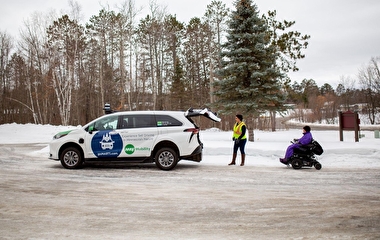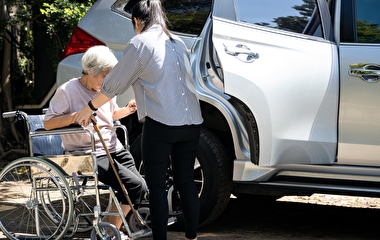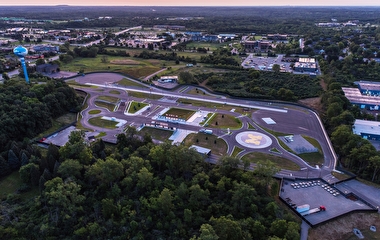
Every day, hundreds of Minnesota transit riders travel to Duluth’s Miller Hill Mall area. The catch? Once they arrive, getting around can be difficult. A shopper wanting to travel between Walmart and Home Depot, for example, would face a dangerous 50-minute walk while crossing at least 15 minor and 12 major roads. It’s an all-too-familiar problem in suburban and rural areas, where land development patterns make it tough for people to reach their destinations by transit alone.
Pairing transit with autonomous vehicles (AVs) may be the solution to this “last-mile” challenge, according to a new study sponsored by the Minnesota Local Road Research Board (LRRB). For this project, U researcher Alireza Khani, an associate professor with the Department of Civil, Environmental, and Geo- Engineering, assessed the transportation needs of the Miller Hill Mall suburban shopping area and developed an autonomous mobility-on-demand (AMoD) system to deliver passengers from the end of a transit line to their ultimate destination.
“There are many potential benefits of using an AV-based mobility service for last-mile transit connectivity,” Khani says. “These include quick fleet repositioning, responsiveness to travel demand, more flexible coverage, and independence from driver availability and behavior.”
A literature review revealed the potential for AVs to help solve the last-mile problem. Past studies have shown travelers are open to AVs for last-mile service and that first- and last-mile access strongly influences the choice to use transit. Additionally, AMoD is currently being tested in Minnesota and elsewhere.
To identify the case study site, the project’s Technical Advisory Panel worked closely with researchers. Members selected Duluth’s Miller Hill Mall because the large commercial area has multiple shopping plazas that create challenges for pedestrians because of building setbacks, an absence of sidewalks, and multilane high-speed roadways. These conditions can make moving efficiently and safely between locations without a vehicle nearly impossible.
Researchers designed and evaluated a new AMoD service for last-mile connectivity in the Miller Hill Mall area using mathematical models and simulations. They envisioned a system integrated with the existing transit network, which included a transit hub where passengers would transfer from a fixed route to an autonomous vehicle. They also determined the necessary fleet size, routing, and geographic balancing to meet travel demands at different times. Simulations were used to measure travel demand, travel time, waiting periods, and more.
“We determined that improvements in last-mile transit access could increase rider safety, enhance convenience, decrease travel time, potentially attract new transit riders, and reduce individual vehicle use,” Khani says. “Larger fleet sizes created more efficient service delivery and reduced waiting times.”
As autonomous vehicles gain traction in Minnesota and around the country, a future demonstration project could test AMoD for last-mile transit in the real world—though vehicles would initially include a driver.
“Effective public transit is challenging in areas of car-oriented land use and development,” says Chris Belden, planning and grants director with the Duluth Transit Authority. “But with further testing and support, an autonomous mobility-on-demand system could be one solution.”
—Megan Tsai, contributing writer


